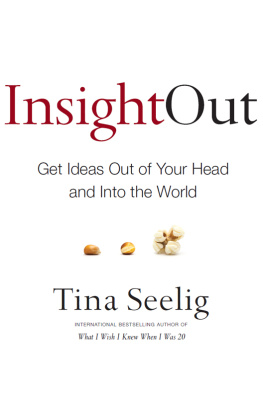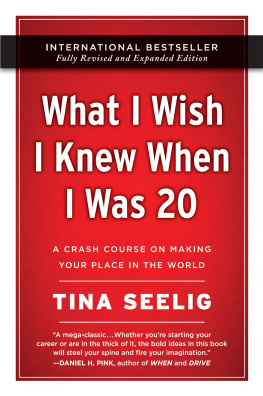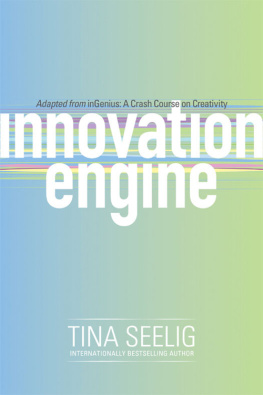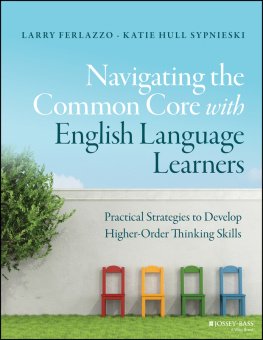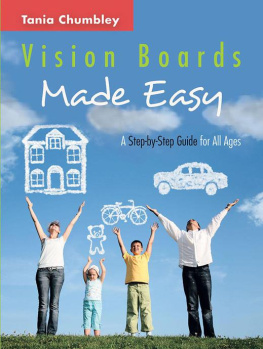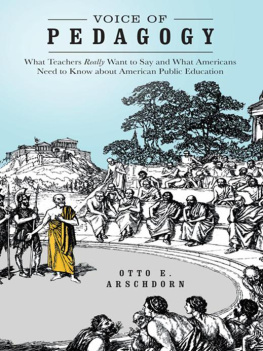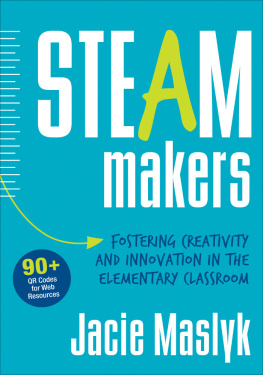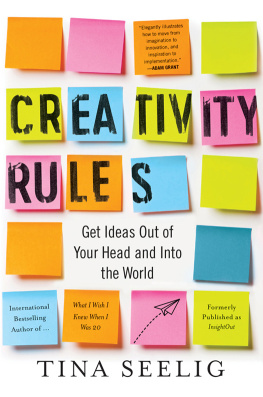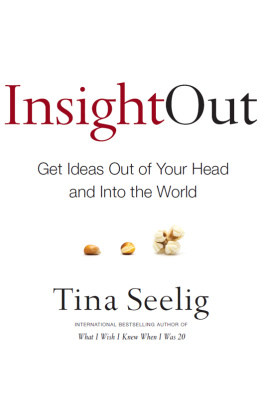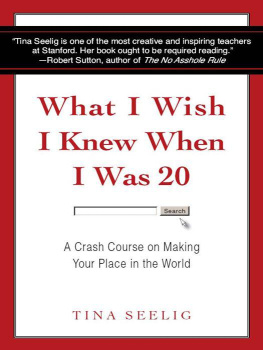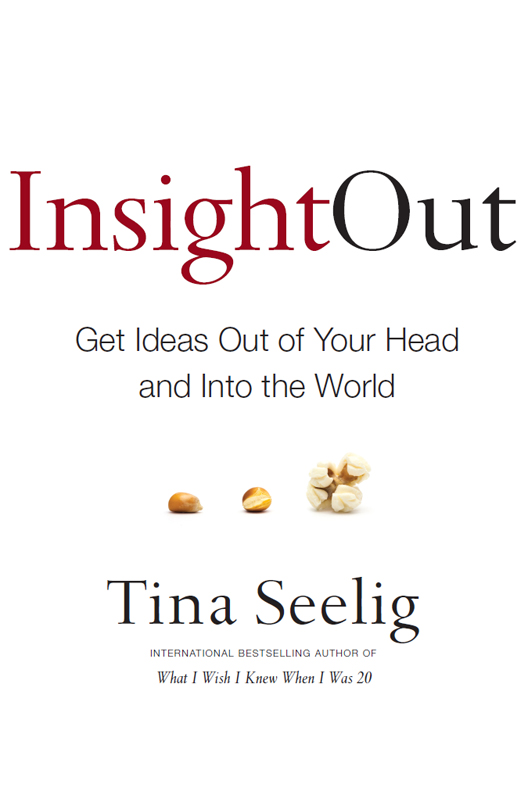For Michael, my superhero
Contents
Guide
A few years ago, I stumbled upon a letter that I had written to myself thirty years earlier. I was looking through an old box of correspondence in search of a note from a childhood friend who had reached out to me soon after my book, What I Wish I Knew When I Was 20, was released. While digging through the envelopes, I found a letter that I had written to myself on the eve of my twentieth birthday. Reading the words scribbled on a lined notepad flung me back in time to an era when I was filled with big dreams, and even bigger doubts about how to achieve them. The letter poignantly describes how challenging it is to harness your potential and bring your dreams to life. It was also a stunning confirmation that the book I had just released, which presented a crash course on making your place in the world, was what I wish I had known when I was twenty. Below is an excerpt from that letter:
I am going to be twenty this next month, and Im supposed to be a real person by now: an adult, responsible, having a purpose. I feel so far from that now. I want to be interesting, and I dont find myself interesting. I want to be intelligent, and Im not. I want to be the type of person I would like to meet, and it seems so fruitless.... Perhaps the goals I have for myself are ridiculously high and I should stop before I start.
Reading this letter was a reminder of how far I had comefrom a twenty-year-old filled with anxiety about where to begin my journey into adulthood, to an adult who has managed to navigate a circuitous path to a gratifying profession. Like countless others, when I was in my twenties I was filled with a palpable drive to do something that was meaningful, but lacked an understanding of how to tap into my wellspring of energy to find a path toward that goal. Thirty years later, I believe there are three crucial elements needed to build a bridge to the future you want to create:
The first is an entrepreneurial mind-set that allows you to see the world as opportunity-rich. It is up to you to make your own luck, to see that most rules are recommendations, and to give yourself permission to challenge assumptions. Those lessons are captured in What I Wish I Knew When I Was 20. As I wrote in that book:
Boundless possibilities result from extracting yourself from your comfort zone, being willing to fail, having a healthy disregard for the impossible, and seizing every opportunity to be fabulous. Yes, these actions inject chaos into your life and keep you off-balance. But they also take you places you couldnt even have imagined and provide a lens through which to see problems as opportunities. Above all, they give you growing confidence that problems can be solved.
The second is a specific set of tools for solving problems and taking advantage of opportunities that you inevitably encounter along the way. Those are described in my next book, inGenius: A Crash Course on Creativity, which illustrates how to harness factors both inside yourself and in the outside environment to unlock the pathway to invention:
Creativity can be enhanced by honing your ability to observe and learn, by connecting and combining ideas, by reframing problems, and by moving beyond the first right answers. You can boost your creative output by building habitats that foster problem solving, crafting environments that support the generation of new ideas, building teams that are optimized for innovation, and contributing to a culture that encourages experimentation.
And third is a clear road map for moving from inspiration to implementation. Thats the book you are holding now.
Im fortunate to have the opportunity to teach these skills to students at Stanford University. As a professor of the practice in the Department of Management Science and Engineering and executive director of the Stanford Technology Ventures Program (STVP)the entrepreneurship center at Stanford School of Engineeringmy role is to help young people identify and seize opportunities. Our goal at STVP is to foster the skills that will enable them to build their career, contribute to the organizations they join, and lead a fulfilling life. We do this in formal courses, extracurricular programs, and with workshops for students and faculty from all over the world. The essence of STVPs philosophy is captured in a slogan painted on our wall:
Entrepreneurs do much more than imaginable with much less than seems possible.
As this message communicates, entrepreneurship isnt just about starting companies. Its about starting anything! Entrepreneurship involves building the knowledge, skills, and attitudes needed to see problems as opportunities and to leverage resources to bring ideas to fruition. This is just as relevant to those who are starting a rock band or planning a trip around the world as it is to those who are launching a company. This book presents a framework for bringing your ideas to lifewhatever those ideas may be.
As with my other books, I invite you into my classroom at Stanford. The words on these pages are designed to stimulate your thinking and your actions. I introduce general concepts and then offer stories to illustrate them. I also share my personal experiences, those of my students, and research related to the concepts discussed. Many of the examples come from innovators and entrepreneurs in Silicon Valley; these are complemented by cases from around the globe.
At the conclusion of each chapter, I suggest projects you can do to reinforce the concepts. These projects are an important part of the experience: they provide stepping-stones for moving from ideas to actions. Some require a few minutes of personal reflection, and others require putting down the book and taking on a specific task. I strongly believe that all learning is experiential. If you arent actively engaged in the material, it wont stick.
I welcome feedback on how you used the book and the projects it has inspired. You can reach me at tseelig@gmail.com and follow me on Twitter @tseelig.
Creativity rules!
Tina
O ver 60 percent of prison inmates in California end up back in prison within three years. This recidivism rate is a proxy for a lack of hope. Those who are released from prison, often decades after they were first incarcerated, face a world with few options, piercing prejudice, and little guidance on how to rebuild their lives. Many look into their future and see nothing but fog, with no clear path ahead. No wonder so many slip back into a life of crime and return to prison.
In an attempt to address this daunting problem, successful entrepreneurs Chris Redlitz and Beverly Parenti started the Last Mile program to prepare prison inmates at San Quentin State Prison in California for successful reentry into freedom through training in business and technology. Along with other volunteers with expertise in a wide variety of fields, they meet with a group of forty prisoners twice a week for six months, teaching them about entrepreneurship and helping them develop skills, such as written communication, public speaking, and computer proficiency.
Participants create a business idea that uses technology to address a social problem, and learn how to give a five-minute pitch that effectively communicates their plan. At the end of six months, they present their idea to an audience of business leaders and fellow inmates. Past projects developed by the men include: Fitness Monkey, a startup crafted to help addicts replace drugs with a healthy addiction to fitness; TechSage, which helps ex-cons become mobile app developers so they can get a job after their incarceration; and the Funky Onion, which buys bruised fruits and vegetables cheaply and sells them to restaurants that will cook them and thus dont mind their funky appearance.

